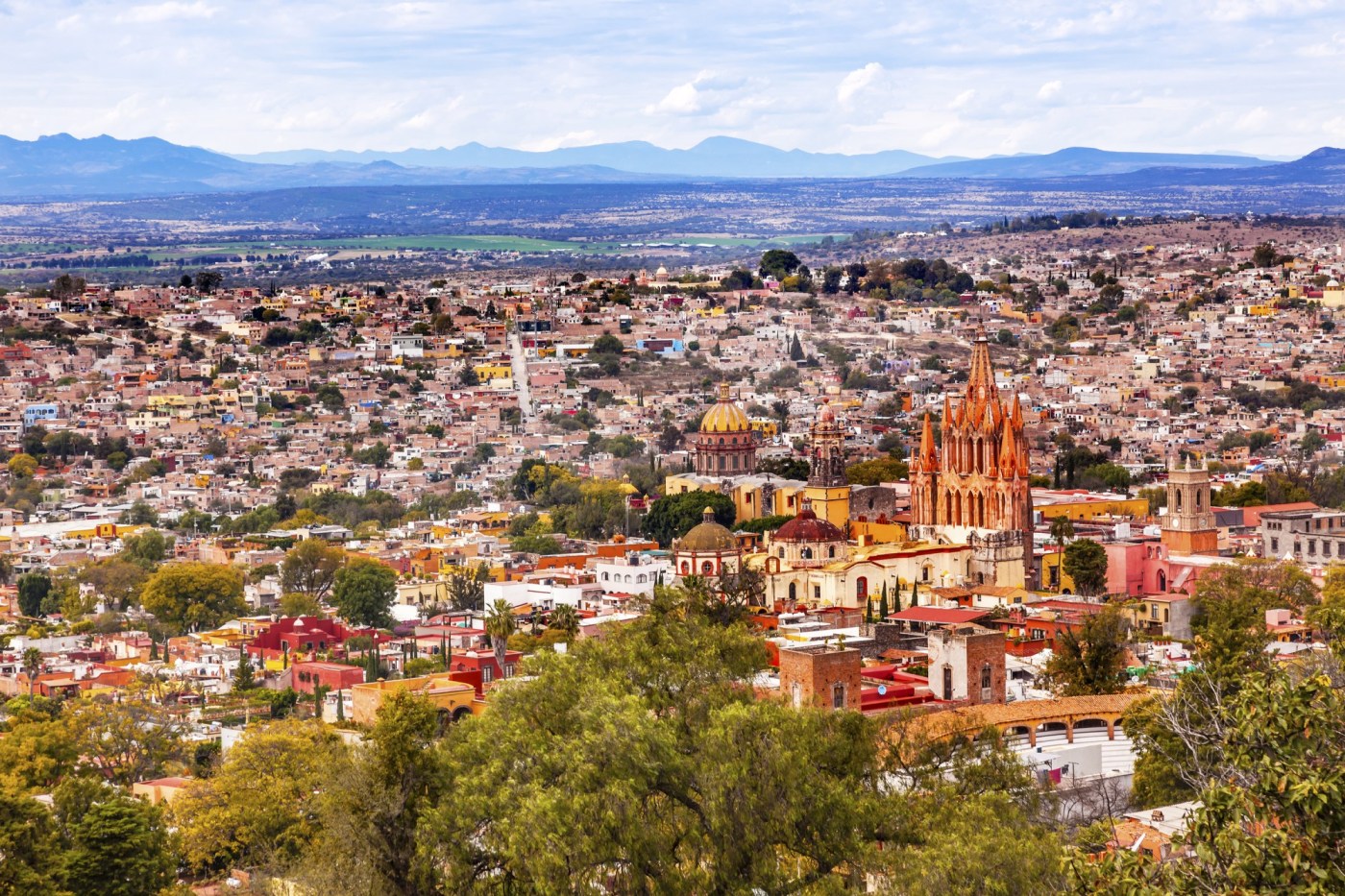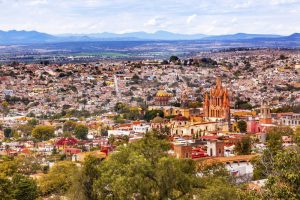
Travel: A wine tour through the vineyards of Guanajuato
The land between San Miguel de Allende and Dolores Hidalgo is covered with grapevines; there is the Wine Route in Guanajuato, Mexico, a tour that will remind you of the freedom of the countryside and of the pleasure of drinking a good wine.
San Miguel de Allende lies about 170 miles northwest of Mexico City, while Dolores Hidalgo sits about 30 miles further north than San Miguel de Allende.
Cuna de Tierra
Guanajuato’s soil is fertile. Miguel Hidalgo y Costilla, the father of the country, knew it well at the beginning of the 19th century, and that’s why he planted vines and taught the people of Dolores how to make wine. That knowledge was lost sometime after the Independence, but the land remembers. About 9 miles northwest of Dolores appears the one that Juan Manchón, Ricardo Vega and Ramón Vélez take care of with affection.
It is Cuna de Tierra, a boutique winery of more than 30 hectares. Its clusters are cleaned by hand before being crushed; cold maceration is practiced, allowing the grapes to release their subtle aromas; and once the wine is turned, it is left to rest in French, Hungarian and American oak barrels.
The tour to see the vines or the plots where raspberries, asparagus and artichokes grow is done in a cart from the 1950s. In the middle of the grapes — cabernet franc, cabernet sauvignon, merlot and syrah are among the varietals of the house — stands a tower made of adobe by architect Ignacio Urquiza. Inside, tastings and pairings take place.
Dos Búhos Winery
On the road to Querétaro, 5 miles from San Miguel de Allende, one arrives at the site occupied by the vineyards of Bodega Dos Búhos. On three hectares of cultivation, on a gentle slope exposed to the south, the grapes — tempranillo, cabernet sauvignon, chardonnay, moscato giallo — grow motivated by the things that interest Diana Maycotte and her husband: estheticism and sustainable methods. This is the small universe of a couple of winegrowers given to experimentation.
Grapes in San Miguel de Allende Mexico. (Curtis Heideman/Dreamstime/TNS)
She is an artist, he is an agronomist, and they know that wine can only be obtained through a creative and organic process, where the use of natural yeasts is as essential as the design of their wine labels. Their wine cellar looks like an art gallery where French oak barrels rest as if it were an installation. Paintings by Peter Leventhal hang on the walls, and old train molds are now objects adorning the space or holding stacked bottles. A long wooden table hosts tastings, organic viticulture workshops, and enology courses.
Martha Molina’s grapes grow near Bodega Dos Búhos, but her grapes grow in a place given over to fantasy. It is Rancho Toyan, where a long avenue of trees with the faces of sculpted elves welcomes the visitor. Stone fairies appear if you pay attention among the orchards, among the pear and plum trees.
A world is prone to utopia, as Martha wanted it, where there are no pesticides, and everything is organic. That includes vegetables and eggs, the beans, the jams, the grapes that have been cultivated with care for years, and even the yeast used to ferment them. Thus, the chardonnay, cabernet sauvignon, and merlot vines are gradually stretched.
To visit the cellar, you have to descend 60 feet underground. The path is a ramp guarded by statues of monks. There, among cold corridors and mud and wood structures, the wine rests in barrels made of French oak. All wineries offer tours of their facilities, tastings and wine pairings. You can hire the services of the tour operator Discovery Guanajuato to visit them or go to each separately with a reservation.
Wine barrels in a vineyard. (Dreamstime/TNS)
Day 1: Dolores Hidalgo
Walk through the Grande Hidalgo Garden, enter the Parish of Our Lady of Dolores, and go to the famous ice cream stands arranged around it on the way out. Go to the José Alfredo Jiménez Museum to learn more about the composer. In addition, visit the Municipal Pantheon in search of his mausoleum.
Related Articles
What’s the cheapest day of the week to book a flight?
Visit these 10 rising vacation spots before they get too popular
NC’s Brunswick Islands offer vivid sights, sounds and tastes, from sunrise to sunset
Bahamas pushes back against US travel advisory, says it remains ‘safe and welcoming’
Escapes that take your breath away: Indulge with your sweetheart in a Valentine’s vacation
Reserve time to discover the other museums: the Museo Casa de Hidalgo, the Museo de la Independencia Nacional, and the Museo Bicentenario. It will be a pleasant visit.
Day 2: San Miguel de Allende
You can stay overnight at the Nirvana Hotel, halfway between Dolores Hidalgo and San Miguel de Allende. Its restaurant is full of delicacies. Nearby is the Santuario de Atotonilco, a masterpiece of mestizo baroque considered a World Heritage Site. In San Miguel, you will find many other dazzling churches.
Take advantage of the Oratorio de San Felipe Neri. If you like contemporary art, go to the Fábrica La Aurora. It is a former textile company now occupied by several galleries.
The Festival de la Vendimia (Grape Harvest Festival) occurs every weekend in August. These three wineries and others participate in it.
The Independence Route continues in Dolores Hidalgo. The tour operator Axcan organizes tours of the main buildings that made history.
In the Sierra de Santa Rosa, a women’s cooperative makes preserves. You can get there by ATV if you hire the services of the tour operator Turismo Alternativo in Guanajuato.
©2024 Northstar Travel Media, LLC. Visit at travelpulse.com. Distributed by Tribune Content Agency, LLC.


